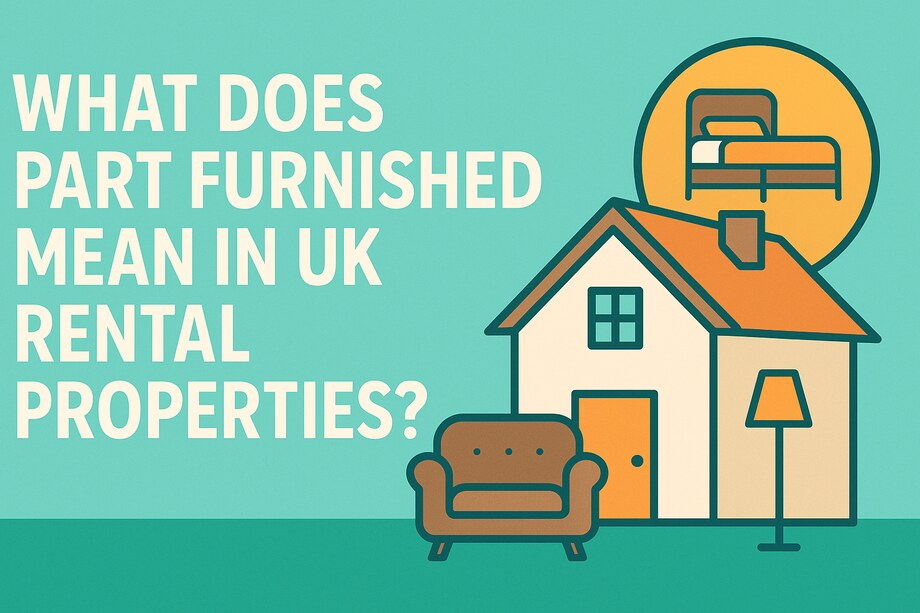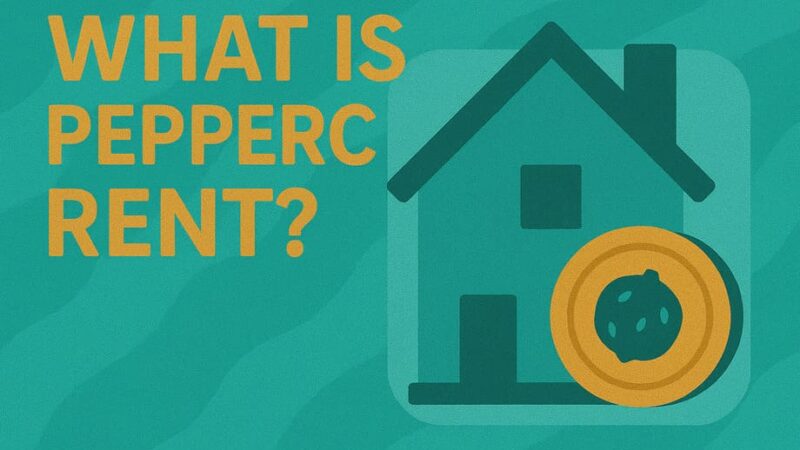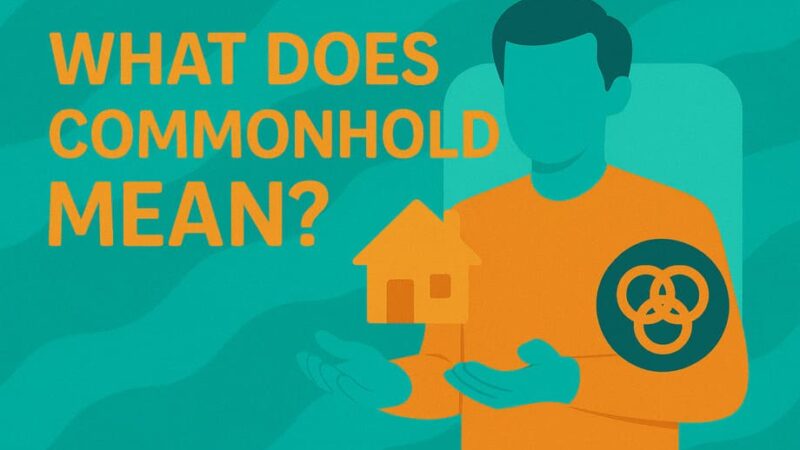What Does Part Furnished Mean in UK Rental Properties? A Complete Guide for Tenants

When browsing rental properties in the UK, you’ll often encounter terms like “unfurnished,” “furnished,” and “part furnished.” While the first two are relatively straightforward, “part furnished” can leave many potential tenants scratching their heads. Understanding what this term means is crucial for making informed rental decisions and avoiding unwelcome surprises on moving day.
Understanding Part Furnished Rentals
Part furnished, also known as “semi-furnished,” refers to rental properties that come with some essential furniture and appliances but not a complete set. Unlike fully furnished properties that include everything from sofas to cutlery, part furnished homes typically provide the basic necessities while leaving room for tenants to add their personal touches.
This arrangement strikes a balance between the convenience of furnished accommodation and the flexibility of unfurnished properties, making it an increasingly popular choice for both landlords and tenants across the UK.
What’s Typically Included in Part Furnished Properties
Essential White Goods
Most part furnished properties include major appliances that would be expensive or impractical for tenants to purchase:
- Refrigerator/freezer
- Washing machine
- Dishwasher (in many modern properties)
- Oven and hob
- Sometimes a microwave
Basic Furniture Items
The furniture selection varies significantly between properties but commonly includes:
- Bed frames (often without mattresses)
- Wardrobes or built-in storage
- Basic dining table and chairs
- Sometimes a sofa or armchair
- Curtains or blinds for windows
Fixtures and Fittings
Part furnished properties typically retain all permanent fixtures:
- Light fittings and lampshades
- Carpets or flooring
- Kitchen cabinets and countertops
- Bathroom fixtures and mirrors
What You’ll Need to Provide Yourself
Personal Items and Soft Furnishings
Tenants usually need to supply:
- Mattresses and bedding
- Towels and linens
- Cushions and throws
- Personal decorative items
- Additional lighting (table lamps, floor lamps)
Kitchen Essentials
Most part furnished properties don’t include:
- Cookware and utensils
- Dishes and glassware
- Small appliances (kettle, toaster, coffee maker)
- Food storage containers
Additional Furniture
Depending on the property, you might need:
- Additional seating
- Coffee tables or side tables
- Desks or office furniture
- Storage solutions
- Entertainment units
Benefits of Choosing Part Furnished Accommodation
Cost Effectiveness
Part furnished rentals offer several financial advantages:
- Lower upfront costs compared to fully furnishing an unfurnished property
- No need to purchase expensive white goods
- Reduced moving expenses
- Often competitively priced compared to fully furnished alternatives
Flexibility and Personalisation
This option provides the best of both worlds:
- Freedom to personalise your living space
- Ability to bring cherished furniture pieces
- Opportunity to gradually build your own furniture collection
- Less restrictive than fully furnished properties
Reduced Moving Stress
Part furnished properties eliminate many moving day headaches:
- No need to coordinate white goods delivery
- Fewer items to transport
- Basic furniture already in place for immediate use
- Reduced risk of damage to expensive appliances during moves
Potential Drawbacks to Consider
Variable Standards and Quality
The biggest challenge with part furnished properties is inconsistency:
- Quality of provided items can vary dramatically
- Some appliances might be older or less reliable
- Furniture styles may not match your preferences
- Limited control over the overall aesthetic
Hidden Costs
While initially cost-effective, expenses can accumulate:
- Need to purchase missing essential items
- Potential replacement costs for worn-out provided items
- Storage costs if you already own furniture
- Insurance considerations for mixed ownership of items
Inventory Management
Part furnished rentals require careful documentation:
- Detailed inventory checks during move-in
- Responsibility for maintaining provided items
- Potential disputes over wear and tear
- Complex arrangements when moving out
Tips for Renting Part Furnished Properties
Before Viewing
Preparation is key to making the most of property viewings:
- Ask for a detailed inventory list in advance
- Clarify which appliances and furniture are included
- Inquire about the age and condition of white goods
- Understand the landlord’s replacement policy for faulty items
During the Viewing
Make the most of your visit by:
- Testing all provided appliances
- Checking furniture for damage or excessive wear
- Measuring rooms to plan for additional furniture
- Taking photos for reference when planning your layout
Before Signing the Lease
Protect yourself legally by:
- Requesting a comprehensive written inventory
- Understanding your responsibilities for provided items
- Clarifying the landlord’s maintenance obligations
- Negotiating any necessary additions or replacements
Part Furnished vs Other Rental Types
Compared to Unfurnished Properties
Part furnished rentals offer:
- Significant cost savings on white goods
- Faster move-in process
- Reduced initial shopping requirements
- But less complete freedom in decoration choices
Compared to Fully Furnished Properties
Part furnished provides:
- More personalisation opportunities
- Often better value for money
- Less restrictive tenancy agreements
- But requires more initial setup and investment
Legal Considerations and Tenant Rights
Inventory and Check-in Process
UK tenancy law requires:
- Detailed inventory of all provided items
- Opportunity to dispute inventory accuracy
- Clear documentation of existing damage
- Understanding of replacement responsibilities
Maintenance and Repairs
Landlords remain responsible for:
- Maintaining provided white goods
- Repairing or replacing faulty appliances
- Ensuring all items meet safety standards
- Annual gas safety checks for provided appliances
Deposit Protection
Part furnished properties require careful consideration of:
- How deposits cover both property and contents
- Clear delineation between normal wear and damage
- Fair assessment of item depreciation
- Return procedures for mixed-ownership situations
Making the Most of Your Part Furnished Rental
Budget Planning
Successful part furnished living requires:
- Creating a realistic furnishing budget
- Prioritising essential purchases
- Shopping smart for complementary pieces
- Building your collection gradually
Space Optimisation
Maximise your living space by:
- Working with existing furniture layouts
- Choosing multi-functional pieces
- Maintaining visual consistency with provided items
- Using creative storage solutions
Building Good Landlord Relations
Ensure a positive rental experience through:
- Prompt reporting of appliance issues
- Proper care of provided items
- Open communication about furnishing needs
- Respectful treatment of the property
Conclusion
Part furnished rentals represent an excellent middle ground for many UK tenants, offering the convenience of essential appliances and basic furniture while maintaining the flexibility to personalise your living space. Success with this rental type depends largely on clear communication with landlords, thorough inventory management, and realistic expectations about what’s included.
Before committing to a part furnished property, ensure you understand exactly what’s provided, what you’ll need to supply, and your responsibilities for maintaining the landlord’s items. With proper planning and clear agreements, part furnished accommodation can offer both comfort and value in the competitive UK rental market.
Whether you’re a first-time renter looking to minimise upfront costs or an experienced tenant seeking flexibility, part furnished properties deserve serious consideration in your housing search. The key is finding the right balance between convenience and personalisation that suits your lifestyle and budget.
Last Updated on August 21, 2025 by James Cartwright







